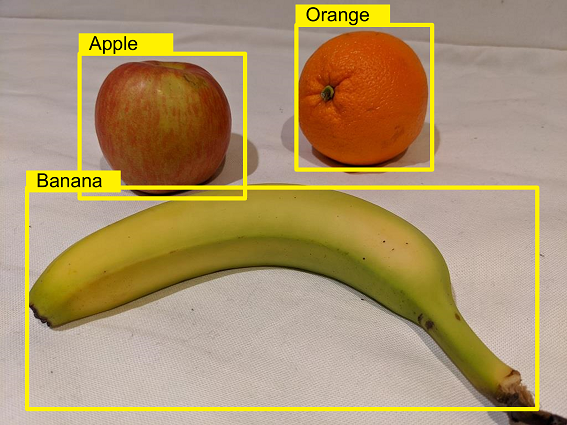Understand custom model types
Custom Azure AI Vision models have different functionality based on the type. The types of custom models include Image classification, Object detection, and Product recognition.
Image classification
Image classification is a computer vision feature where a model is trained to predict a label for an image based on the contents of the entire image. Usually the class label relates to the main subject of the image, however individual use cases may vary.
For example, the following images are classified based on the type of fruit they contain.

Models can be trained for multi-class classification (where there are multiple classes, but each image can belong to only one class) or multi-label classification (where an image might be associated with multiple labels).
Object detection
Object detection is a form of computer vision in which a model is trained to detect the presence and location of one or more classes of object in an image. For example, an AI enabled checkout system in a grocery store might need to identify the type and location of items being purchased.

There are two components to object detection:
- The class label of each object detected in the image. For example, you might predict that an image contains one apple and two oranges.
- The location of each object within the image, indicated as coordinates of a bounding box that encloses the object.
Product recognition
Product recognition works the same way object detection does, but with improved accuracy for product labels and brand names. The predictions for product recognition have both the class label and location, enabling you to know where in the image the product is.